Lisa Niver's Blog: We Said Go Travel, page 441
December 16, 2013
Exploring Bhaktapur, Nepal
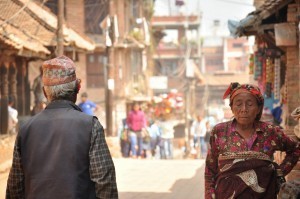 The people of the village-like-city Bhaktapur are splendid actors in the fabulous setting of the place. Cap saddled elders sit in groups of 4 to 5 members, every few meters, atop a wooden carved stage. Etched-wrinkled women keep busy cotton weaving with a historic looking spindle. Children of all ages play chase, hide-’n-seek and run around colorful temples, gigantic lion and elephant sculptures and spectacular wooden structures. Seems as though the place is a time capsule to how things were hundreds of years ago. Dilapidated red brick walls; Tens of stone statues are worn to the point of undistinguishable impressions of the former animal carved out of them in the first place. One more gust and all this history will topple like a house of cards. The realization that no restoration or renovation work was done in this ancient city (apart for a few sporadic buildings)captivated us.
The people of the village-like-city Bhaktapur are splendid actors in the fabulous setting of the place. Cap saddled elders sit in groups of 4 to 5 members, every few meters, atop a wooden carved stage. Etched-wrinkled women keep busy cotton weaving with a historic looking spindle. Children of all ages play chase, hide-’n-seek and run around colorful temples, gigantic lion and elephant sculptures and spectacular wooden structures. Seems as though the place is a time capsule to how things were hundreds of years ago. Dilapidated red brick walls; Tens of stone statues are worn to the point of undistinguishable impressions of the former animal carved out of them in the first place. One more gust and all this history will topple like a house of cards. The realization that no restoration or renovation work was done in this ancient city (apart for a few sporadic buildings)captivated us.
In the supplied tourist pamphlet we read that most of the town’s inhabitants’ livelihood comes from farming or husbandry. Even if in reality we are talking about only 50% of the inhabitants, it is still a remarkable data. Goats grazing beside a temple, bales of hay stacked between houses and chickens pecking at Shiva’s, or Buddha’s, offerings (depends on whose side you are on…) are a few of the supporting arguments.
We continue to wonder the streets and from time to time reach alleys that converge to a small dead-end plaza, surrounded by 3-4 stories high sooty residential buildings, or rather open into a big square that leads us into another decorated temple or pool, a vital gathering place.
Bhaktapur served as the Nepalese capital between the 12th to 15th centuries. Apparently, in an area of only 7 square kilometers here lies a royal palace (hope we won’t be late to catch a glimpse at it…) and the impressive original city gates. Our eyes are drawn especially to the exquisite wood carving works, so beautiful that it’s hard to imagine just how they were prepared here in the 8th century AD. Countless signs of “Curd”, juju dhau in local dialect, or simply yoghurt, raise expectations for a refreshing break in one of the many “Curd shops”. Huge steaming pots assure us our lunch break will include, of course, Momo, yet our feet lead us to a small building, which can hardly be called a restaurant, but the flavors manage to fill four hungry diners’ tables. We stand by and watch one client after the other come in and order while we try to estimate the unwritten menu and clearly do not understand what the fuss is all about.
A young man in his early 20′s is running around taking orders, heating fries and serving customers. His beautiful wife is sitting on a 20 cm high stool, barely lifting her eyes to the counter, too busy folding Momo in an incredibly agile manner. The couple’s 3 year old daughter conducts a vocal concert to the restaurant’s guests: she repeats in song all the orders and sometimes “gets stuck” on a word or two and sings it for 10 minutes straight. She also mimics Oran when he orders our meal: one of everything offered on the counter; she starts singing: “One! One! One!” constantly. We get the local tempura-like-coated cauliflower and potatoes served in bowls made up of leaves. The role of a knife and fork is played by two toothpicks.
After nearly a year’s trip in East Asia we’re not surprised how delicious everything is in this tiny diner. We order another round of everything and the mother decides it is excellent timing to test our babysitting skills, so she seats her little one in front of us at the table, with her own lunch serving and wishes us Good Luck! with only a hint of a smile. Then she hurries towards the reservation counter at the entrance, where on a bench against the wall apparently lies their new born baby and she lies down to breastfeed him.
About the Authors- Oran and Lihi: We are an enthusiastic Israeli couple bitten by the travel bug. After previous individual travels to many countries, we set out together last spring to a yearlong adventure in Asia. Please visit our travel blog, lihiandoran, for many more stories, pictures and helpful info for visiting China, Mongolia, Myanmar, Sri Lanka and Nepal. Thank you!
The post Exploring Bhaktapur, Nepal appeared first on We Said Go Travel.
Mexico: Wrung Out With Pleasure in Tulum
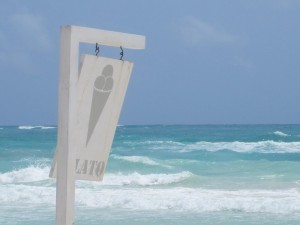 Peeeeeep. Peeeeeep. A long and piercing peep disturbs my slumber. I lie there and pretend I can ignore it.
Peeeeeep. Peeeeeep. A long and piercing peep disturbs my slumber. I lie there and pretend I can ignore it.
Peeeeep. There it goes again. It’s somewhere around 6:00am and those crazy Mexican sinsonte birds are at it again. I peel off my eye mask and sunlight floods the room. As much as I’d like to sleep in, I’ll gladly take the call of the wild over an alarm clock. A cuervo bird chirps a catcall whistle, and a woodpecker hammers away. I crawl out of bed and latch open the oak door that leads out to the marble patio and then dive back in and absorb the view. What’s not to love? It’s a jungle out there of mangrove, palm, arbusto and bejuco trees with leaves of bright and brilliant greens. Through the palm leaves morning sunlight twinkles across the ocean like stars. Waves crash and I can hear the tide rolling, rolling, rolling. Although it feels more like calling, calling, calling. I’ve been in Tulum for a week and head home tomorrow, which leaves only one thing to do—suit up. It’s going be another tough day.
For the past 12 years I’ve been making a pilgrimage to Tulum. Yes, there are so many other places to visit—and I do—but there’s a piece of heaven here I can’t do without. From those noisy birds to the pitch, black jungle where at night you can’t see your hand in front of your face. The hospitality and generosity of Mexicans, their culture and food, and the way their very good English compensates for my not so great Spanish. I like meeting folks who’ve settled here from different countries and followed the call to get off the conventional grid. Their spirit is palpable and inviting. It’s a mellow no frills kind of zone where anything goes and the common draw is the pristine water of the Riviera Maya that works a kind of magic.
How many photos can one person have of an ocean? Lots. It doesn’t really matter how many I take though, I can never bring these colors back home. Fine, sugary sand mingled up in sea foam ripples along the shoreline as the tide pulls back. It’s hypnotic as it comes and goes, and I could easily laze around and gaze at it all day, but the Mayan sea is calling my name. I stand in crystal clear water the color of pale sea glass and spot little shells with soft pink edges. A school of tiny fish dart quickly left, right left, then disappear. I like to play in this tranquil area a bit before I get my butt kicked by the nonstop roll of waves awaiting me further out. Eventually, I dive into turquoise. Only Mother Nature could whip up this cocktail of blue and green to create such design. I paddle around but don’t get far before a sheer, blue wall rushes towards me. I take cover and dive under it and have just enough time to take a breath before I’m caught up in a crash of waves—some small, some gigantic—that seem to come from all directions. Salt water rushes into my noise, mouth, and throat. Tossed about, my knees scrape the ocean floor. I find balance, sputter and feel my bikini bottoms around my thighs. Bright, white, bubbly sea foam rushes around me. I regain my dignity, take a breath and next thing I know, I’m knocked down by another swell. A glutton for this sort of punishment, I willingly return for further cleansing. Because that’s what it feels like to be here. Whether the day has greeted me with an ocean as smooth as a pane of glass that I can dissolve right into or a rough and tumble surf, the sea is the only natural elixir that can work magic on my body, mind, heart and soul.
Sun-kissed and salty, I drag myself out and onto the sand and collapse for a siesta under a palapa. I’ll go back in for a few more rounds until the sunset turns the sea a shade of sparkling sapphire. It’s a hard habit to break.
Later, I’ll set my phone to wake me before the birds get around to it. Tomorrow, I want to enjoy the last sunrise, the last long beach walk…the last dip. The final swim is bittersweet but it’s got to last until summer hits Brooklyn like the weight of the world. Tonight I head out through the jungle onto the beach road for my last meal of fresh guacamole followed by fish tacos. Tomorrow I might be sad, but for now I’ll just have to drown my sorrows in a few margaritas on the rocks with salt, followed by a cup of vanilla gelato. It’s going to be a tough night.
About The Author: Claudia Santino is a freelance travel and lifestyle writer. She’s a contributing editor to www.Mrsrmag.com and has writes a blog to encourage travelers to find their writing voice and share it. Visit her at PortsAreCalling.com.
The post Mexico: Wrung Out With Pleasure in Tulum appeared first on We Said Go Travel.
Instagram: Simple Steps to Join the Mobile Photo Revolution
 While teaching elementary school, I once remarked, “I have a video camera but I don’t know how to make a movie.” One of my fifth grade students, Hannah, said, “Don’t worry Mrs. R, I will stay in at recess and teach you iMovie.” In case you don’t have a student around, I can highly recommend Instagram Power: Build Your Brand and Reach More Customers with the Power of Pictures by Jason Miles to quickly get started with this powerful tool.
While teaching elementary school, I once remarked, “I have a video camera but I don’t know how to make a movie.” One of my fifth grade students, Hannah, said, “Don’t worry Mrs. R, I will stay in at recess and teach you iMovie.” In case you don’t have a student around, I can highly recommend Instagram Power: Build Your Brand and Reach More Customers with the Power of Pictures by Jason Miles to quickly get started with this powerful tool.
This book shares success stories and easy steps to get started with the latest social media winner. My husband, George, is building our brand on Instagram and with Miles’ steps and coaching from a friend’s eleven year old, we are making progress. Recently, we were on the plane with students studying in London who gave us more assistance on the road to social media greatness.
Do you think you don’t need social media or a mobile site? Think again.
“According to analyst Mary Meeker, at the end of 2012 there were 5 billion cell phones in use globally. The planet has 7 billion people, but many of them are children.” And really many children are also on their phones!
When I consult for social media, many people ask me: “Oh no! Do I have to learn another platform?” The answer is yes. As Miles reports: “In August 2012, Instagram passed Twitter in terms of daily active users on mobile devices.” It is important to pick the social media platforms that match your audience but remember: “Recent statistics indicate that roughly 5 million Instagram images are shared every day.”
One of Miles’ top tips for Instagram is including captions. We took his advice and downloaded InstaCap but our friend, Dean, recommended InstaMag, which we are enjoying more. We heard early on from our 10-year-old consultant, Ashley, that we needed captions. At first we thought that meant what you write under the photo in the explanation part but it means words that are physically on the photo.
Using his examples and instructions, you can use Instagram well without it taking over your life. We have only just begun on this platform and as Miles remarks everyone starts with no followers but we are growing!

Our new Instagram Site for We Said Go Travel
It is worth the effort to make a plan to “Follow the people who liked your product images…and leave comments frequently on many people’s images.” It is important to follow Miles’ advice that comments “be focused, be intentional, and be sincere.” We appreciated his practical help on how to take a screenshot. “Simply navigate to your website, look at the image, and on an iPhone press the Home and Sleep buttons at the same time. The image you’re looking at will be saved as a picture in your photo album.” This is a great way to get photos of your website on Instagram.
Remember, “People like images that stir them emotionally: vacation destinations, sandy beaches, gourmet cuisine, sunsets, shoes, dresses, pretty places, and pretty faces.” Think about what you can share but 2-3 images a day is more than enough. We followed his advice and our Instagram images also go to our twitter and Facebook fan page. Our next step is to “set up the Instagram social sharing buttons to point to the web version of our Instagram profile” on our website. We want to make it easy for people to follow us on our new platform. We have shared the address in twitter; Facebook and it will be in our next newsletter.
“Frigyes Karinthy originally suggested the idea that everyone in the world is within six degrees of separation or less.” Using social media I have found I am now often only one or two degrees separated from anyone I want to connect with online. I can highly recommend this book and you are welcome to join us on any social media platform!
About this Review: Lisa Niver Rajna is a traveler, writer and social media ninja. She and her husband left the USA in July 2012 and have been on the road ever since. Follow their journey at We Said Go Travel or on their newest platform: Instagram!
The post Instagram: Simple Steps to Join the Mobile Photo Revolution appeared first on We Said Go Travel.
UK: Over Hill and Dale: Mother Nature’s Gift
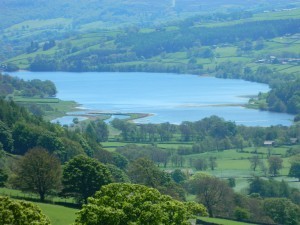 Nestled within the rolling hills of God’s own country; the sentiment of awe was felt here first.
Nestled within the rolling hills of God’s own country; the sentiment of awe was felt here first.
The small village of Lofthouse lies within Nidderdale, virtually untouched by the modern man and only ever visited by the off-chance camper and the ramblers that stumble across it by fortunate accident. The village is heavy with the knowledge of nature’s secrets that are desperate to remain hidden, until man eventually creeps into every last inch of the British countryside, eating away at its natural wonders and substituting its trees with unsightly, grey buildings. In the last 15 years, Lofthouse has scarcely altered since I first rested my eyes on it, aged 5. Several times a year for my entire childhood, I was brought to this emerald, undulating world, away from the city, away from the chaotic streets and the frenzied lives of metropolitan people. Its undulating hills carry whispers untold, caught up in a tumultuous wind and released into the streams at the peaks of the hills and mountains. Its patchwork quilt of greens, browns and colourless yellows are divided by old dry stone walls crumbling at the fear of being replaced by a modern alternative. Small white specks of fleece graze the fields, introspective of their older relatives in the sky, as the dreamy blank billows aimlessly drift around above. Blades of grass never once walked on breathe a sigh of relief as a group of hikers overhead set out in the other direction, debating where to stop for their tea break. Nature thrives here. Everything is effervescent, as bold in colour and as sharp in shape; as though a natural camera lens has been fitted to focus on every detail, with every angle and sight stimulating a gasp of wonder.
One shop and one pub is all that is necessary for those who reside here. Number 47 makes home-made ice cream and number 12 sells freshly farmed eggs; sell sufficiency in full swing. A solitary man sits on a stony peninsula that juts out into the river with just enough room for himself and his fishing rod, intensely watching his line for a bite while a natural clock sits behind him in the shape of his own shadow. The view for miles is reflective of the realism of freedom and need to explore. There are no rules here.
The faint smell of Mother Nature herself fills the air in the shape of hay bales, cut grass, and fresh manure… yet the views distract from any form of sensory discomfort.
The sun spits out a pinkish hue as the night struggles to encompass each hill and dale, only earning the right to do so once it releases its burning flecks of beauty that glitter across the sky, proud in their successful mission to shine, without having to battle against the intense glow of city lights.
Each day is a different day. The same scenery can be admired time and time again; a ground-hog day here would be ecstasy as the eyes feast on new perspectives, colours and angles. This place is my small haven. Whenever I get the chance, I go back to Lofthouse, realising the grandeur of its influence upon me. I appreciate the beauty of nature; I value silence, rest and peace. Why the human race would even contemplate ruining natures very own gift of beauty is something that will always be beyond me, and the frightening reality that in just 50 years time, my own grandchildren may not be able to experience this place is frankly incomprehensible. Everything is beautiful here.
About the Author: My name is Elissa Parker and I am 20 years old. I study French and English at the University of Leicester. I am currently on my year abroad teaching English in the north of France. While I am in mainland Europe, I am trying to visit as many countries as possible!
The post UK: Over Hill and Dale: Mother Nature’s Gift appeared first on We Said Go Travel.
December 15, 2013
Southern Africa: Grateful to be Sharing our Planet with Rhinos and Sharks
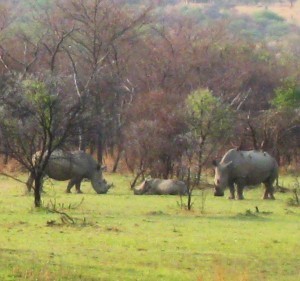
Borakalalo Rhinos
Having been brought up as a city girl it wasn’t until my late 20’s when I discovered a hidden part of myself, that part that yearned for the reconnection to my ancestral wildness. My then new, Zimbabwean born, boyfriend introduced me to Fothergill Island, a Game Lodge on the edge of Lake Kariba in Zimbabwe. This experience turned my idea of a holiday on its head. Never again would lying on the beach prove to be quite as satisfying.
Few experiences measures up to the sound of an elephant’s deep rumble; the roar of the male lion sitting on his pride rock; the sight of the busy dung beetle rolling his huge load; or the grace of the impala bounding across the grassy plain. The gathering of herbivores, alongside carnivores, warily putting aside their differences whilst sharing a drink at a waterhole under the setting African sun is as it should be. Adventure is in the discovery of recent animal activity such as a steaming midden, the rhino’s communal toilet, or some fresh spoor providing invaluable information on the animals passing through. This wildness awakens distant memories of those hunter gatherer days, when homosapiens lived harmoniously alongside earths other inhabitants.
On a recent trip to the Borakalalo Nature Reserve, in the North West province of South Africa, we settled alongside a water hole observing two adult White Rhino and their infant. We watched them lumber along, taking in refreshment from the water, grazing along the way – the youngster suckling occasionally from his mother. Shortly after our trip we heard that these rhino had been poached. Their life extinguished just for their horns. The horns are sold into Asia for medicinal purposes and in Yemen for coming of age dagger handles. The medicinal uses are varied and the results unproven. Rhino horn is made of keratin, the same as our hair and nails. It has been suggested that the customers hoping for healing, from rhino horn medicine, would be just as well off chewing their own nails. Yet these amazing animals are losing their lives to feed this nonsensical obsession.
When did humans evolve into this invasive alien species? When did we lose our connection to our planet and start down this path of destruction? Is there hope for our fellow earthly inhabitants or are we going to eradicate one species after the other until there are none left on earth?
Perhaps it’s the optimist in me – yet I believe we can, and are, making a difference. I am grateful that many of us have awoken from this dark path still journeyed along by many modern age humans. I am grateful to be part of this growing collection of people who do not believe the killing of millions of sharks a year for their fins, to make fin soup, is necessary. Yet most of all I am grateful that I still get to share our planet with the Rhinos and Sharks. I am particularly grateful that whilst they continue to escape extinction, there is the hope that they will be around cohabitating with humans thousands of years from now.
About the Author: Claire Madgwick is a wacky 40 something homeschooling Mom of two children, one husband & two Labradoodles. Lives in the big smoke but has yearnings of one day moving to the country and becoming self sufficient. I write mainly about homeschooling, travelling & Labradoodles – my 3 passions. Follow Claire on Google+
The post Southern Africa: Grateful to be Sharing our Planet with Rhinos and Sharks appeared first on We Said Go Travel.
Guatemala: Men With Machetes, Bones With Souls, Mountains With Secrets
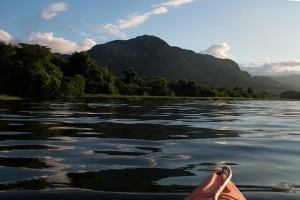 “Are you afraid of death?” he asks me with the same intonation as if he is asking Do you like yellow flowers. I don’t know how to answer. My mouth becomes dry. “When you go to the graveyard, are you scared?” he clarifies.
“Are you afraid of death?” he asks me with the same intonation as if he is asking Do you like yellow flowers. I don’t know how to answer. My mouth becomes dry. “When you go to the graveyard, are you scared?” he clarifies.
“When I was a little girl, yes, I was scared of death and to go in graveyards, but now no. Now I am more afraid of the living than of the death.” We both lough at the joke.
We are walking on a dirt road through a vast plantation of palm trees, the guy and me, past a palm-oil treatment plant, across a wide shallow river, and into the shadow of a jungle-covered mountain. Ivo, Joni, and the two other guys are walking ahead of us. We met them this morning. We don’t know their names. We don’t know if they are good guys or bad guys. All we know is that they are young indigenous Q’eqchi men who agreed to take us to a cave in the mountain above their village. They are wearing jeans, t-shirts and black rubber boots, carrying small backpacks and machetes.
The whole thing happened spontaneously. We were sailing along the remote edge of Lake Izabal, Guatemala’s biggest lake. It was getting late; we had to find a place to anchor overnight. We approached the shore where a big column of grey smoke was coming out of the forest: a village, we thought, and that’s where we stopped. From the boats we saw a few houses on the banks of the lake. Tiny, made of thin logs and roofs of dry palm leaves. Behind them, the heavy humid mountains of Sierra de las Minas: white limestone covered with thick intensely green jungle. The night fell.
In the morning the entire village gathered on the shore to meet our kayak. Caxclampon Pataxte is a small community of a few hundred indigenous Q’eqchi, mostly children. Tourists don’t stop here often, and so our visit is a huge event.
“Are there caves near-by?” I ask. Only a few speak Spanish.
“Yes, there is a cave not too far; we can take you there if you like.” Thus begun our journey.
Once we enter the jungle and start climbing the mountain there is no road anymore. Our progress is slow and difficult. The guides use their machetes to cut a path through tangled vegetation and dig holes in the steep slopes making steps for us. The terrain is extremely harsh, at places seems impossible to pass.
By the time we reach the cave, our guides tell us all about their struggles against the Colombian palm-oil company which, since over a decade now, is exploiting and polluting their land. The vast plantations of palm trees we have seen on our way, the smoke of the palm-oil treatment plant, the channels dumping chemical waste in the lake, are all killing the trees, poisoning the water, and bringing disease to their children. They have been robbed of their ancestral land by a corporate giant and are now fighting to get it back.
By the time we come back from the cave, we have become friends. The kind of friends who can count on each other. We could count on them for protection against the village crooks and the company people who saw us taking pictures and filming around the palm-oil treatment plant; they could count on us to tell their story of struggle against injustice.
We get to the cave’s entrance after about three hours of extreme hiking through the jungle. It is a small hole in the grey rocks leading down. The three guys stop at the edge of the hole to say a muffled prayer in Q’eqchi before going in. We follow. It is a place they rarely visit, they say, a sacred site for prayers and rituals; for secrets and secret knowledge. We are the first white people to ever enter this cave.
They lead us into a narrow dark corridor, humid and cool. We get to a chamber. The light of a small flashlight illuminates scattered objects on the floor: yellow bones, human skulls, lower jaws with crooked teeth. Some are calcified to the cave’s walls; others lay loose on the ground. It is a Tomba Maya, they explain, a Mayan burial ground. The skeletons must be hundreds of years old, they say, from the times before the Conquista.
Being in the presence of ancient Mayan remains is something both strange and beautiful. In the dark, my mind begins to wander. The cave with its breath of a carnivorous flower becomes a temple; I become a ghost from a faraway land.
“I am honored and deeply grateful, I whisper, to be here with you: men with machetes, bones with souls, mountains with secrets.”
About the Author: Mira Nencheva is a writer, photographer, and a nomad. With her husband and two children she is on an extraordinary journey around the globe aboard a 38 feet catamaran Fata Morgana, exploring natural and cultural sites of interest, living off grid, volunteering, and making art for social change. Stories and photographs of their journey can be found on Facebook.
The post Guatemala: Men With Machetes, Bones With Souls, Mountains With Secrets appeared first on We Said Go Travel.
Christmas in The Philippines – Part 1
A Guest Post by Johanna Castro
We love The Philippines at any time of year, but if you’re thinking of traveling to The Philippines during the Christmas holidays, you can expect all sorts of festivities and festivals.
I was lucky to live in a suburb outside Manila for nearly 4 years and my over-riding memory of the Christmas period is of prayer, colourful fiestas and food – all over the country, in the provinces, on the islands and in Manila.
Christmas in The Philippines – Maligayang Pasko – Merry Christmas!
Christmas or pasko comes from the Spanish, Pascua de Navidad, meaning Christmas, and in The Philippines it really begins during the first month ending in ‘er’, which means September! This is when the shops and department stores begin stocking Christmas paraphernalia and playing Christmas carols.
To be honest by the time Christmas arrived, I’d often be hoping never to hear another Christmas carol again ever, but that would be Scrooge-like, because the Filipinos love music and song, and it’s such a jubilant time of year.
Mass of the Rooster
On the 16th December at dawn, church bells ring in the official start to The Philippine Christmas, and the devout will rise early to celebrate Mass of the Rooster (Misa de Gallo) which marks the beginning of nine days of prayer.
In The Philippines Christmas doesn’t always end on the 12th day! Although Three Kings Day on 6th January is the official end to the season, the festivities can be stretched out until March. I’m not sure if that ranks it as the longest celebration of Christmas in the world?
Flashing Lights on all the houses
What we loved were all the innovative touches at Christmas. With no snow, the traditional idea of Christmas dulled a little for me, but I was soon reveling in the fact that we’d see palm branches decorated with bamboo carvings or shells, and trees might be sprayed silver, gold, white or green. And every house in our suburb would be flashing bright with lights as if each house was trying to outdo the next door neighbours! It was quite a contest.
The traffic in Manila was always a problem at any time of year, and gridlock was a day to day frustration. I used to try to get my Christmas shopping done really early because I knew that frrom September onwards Filipinos from the provinces would be swelling numbers, making trips to the city, often on public transport and Jeepneys, to buy their gifts.
Christmas is the time of year when people return home to their families from wherever they are. Many Filipinos have to work overseas to earn money and the Balikbayan or overseas workers, return from all over the world to be reunited with their loved ones.
Family is number one
Family ties are vitally important to Filipinos and Christmas is a time of not only reaffirming faith, but also family relationships.
If you would like to read more about Christmas traditions in The Philippines, and how you can help those affected by Typhoon Haiyan, please read Part 2 of this post.
Until then, Maligayang Pasko – Merry Christmas!
Bio: Johanna Castro is a travel writer and writes two blogs. Her “Travel Blog, ZigaZag“ inspires people to “Live for the Moment, Love Adventure and Do Something Awesome,” and “Lifestyle Fifty” is for fun, feisty, funky women of a certain age. To learn more about Blogging download her free E-book “ How to Be a Well Fed Blogger” by signing up for her Newsletter Jo’s written for 40+ print, and around 20 online publications, has self published a children’s novel in support of an orphanage in The Philippines, lived in 11 different countries, is married to a geologist and has two well traveled, grown up children.
The post Christmas in The Philippines – Part 1 appeared first on We Said Go Travel.
Sri Lanka: Climbing Sigiriya
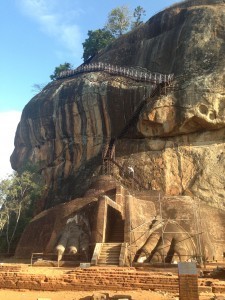 “I am the Queen” giggled the middle aged Japanese lady as we stopped for her to sweep past us, borne aloft by her two Sri Lankan guides. We watched with envy as, cool and calm, she ascended the steep metal staircase with her feet making walking motions while several centimetres above the steps. Firmly gripped under each arm she was being propelled up in regal fashion.
“I am the Queen” giggled the middle aged Japanese lady as we stopped for her to sweep past us, borne aloft by her two Sri Lankan guides. We watched with envy as, cool and calm, she ascended the steep metal staircase with her feet making walking motions while several centimetres above the steps. Firmly gripped under each arm she was being propelled up in regal fashion.
Hot and sweaty we continued to mount the iron rungs slowly, pausing every now and then to get our breath and have a sip of water. We had 750 steps to climb, with little shelter from a vicious sun but we were determined to reach the top of Sigiriya, a russet red volcanic rock in the heart of Sri Lanka. A UNESCO heritage site Sigiriya or Lion Mountain has the remains of a 5th century fortified palace built by King Kasyapa at the top of its 370 metre climb. As a keen historian I was determined to get there.
Fortunately for us the climb was broken up into manageable chunks with occasional stretches of flat. A third of the way up we stopped to admire the beautiful frescoes of women with flowers in their hair painted on the rock face in the Mirror Wall. The shade here was a welcome respite.
Up again, this time by way of a caged metal spiral staircase hanging off the side of the rock. Glancing up while on it gave me a horrible sensation of being in mid-air. I gritted my teeth, continued on and was glad when I was back on firm ground once more.
By now we’d reached a large flat area of rock where a pair of enormous lion’s paws appeared to be cradling the staircase leading to the peak of Sigiriya. This was Lion’s Gate, the entrance to the palace. We took advantage of the break to rally for the final climb before pressing on.
We were only a few steps up when the group in front paused and a panicky conversation took place between them and their guide. We moved forward and were stopped by frantic gesticulating and repetition by the guide of the word ‘bees’. There was a swarm of deadly wasps ahead and it was too risky for those on top to come down, or for us to continue going up. We retraced our steps to Lion’s Gate and, looking up, could see the swarm hovering near the side of the rock. Time ticked by and we were beginning to despair of ever being able to attempt this part of the climb when the wasps appeared to fly off.
I gave an inward cheer as a small group of plucky tourists began to descend now the danger had passed. A moment later and we were off up on our last leg to the top. This part was the most hair-raising of all. Affixed to the side of the rock the stairs were metal, hot and very narrow. Even more worrying the staircase was undergoing maintenance while we used it. A sign at the bottom warned us to be careful and as we climbed up we had to step over a man using a drill to affix one of the steps more securely to the rock. By now we were so near our goal we would probably have crawled up the remainder but even so I did feel a flurry of hastily suppressed concern.
A few more steps and we were there! With the last step we reached the flat rock top and could see the remains of the palace. It was huge, much bigger than I’d imagined and with clearly definable foundations still visible. As well as the palace, conquering the peak gave us a bird’s eye view of Sigiriya’s historic gardens spreading out from the rock into the surrounding countryside. Grateful to have made it we wandered around wondering how King Kasyapa, his family and courtiers accessed the palace and applauding their ingenuity in building on such a beautiful site.
And what about our queen? She’d been and gone, no doubt with scarcely a bead of sweat or a hair out of place, but I was glad we’d done it our way.
About the Author: Clare Gleeson is a New Zealand historian, librarian and travel writer who enjoys exploring her own country as well as those further afield. She has a travel blog at www.thewanderinghistorian.com
The post Sri Lanka: Climbing Sigiriya appeared first on We Said Go Travel.
December 14, 2013
Indonesia: A Quiet Gratefulness of Mt Agung
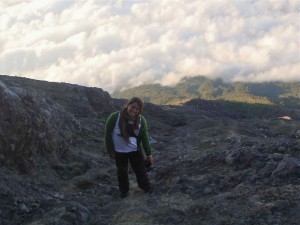 “If she can do it, I’m sure I can,” I answered, cockily.
“If she can do it, I’m sure I can,” I answered, cockily.
Bagon, a Balinese friend I had made along the way had asked if I was sure I could climb the mountain- finish the 6-hour trek to the top of mighty Mt. Agung, the tallest volcano in Bali at 3,142M and the 5th highest in Indonesia.
I had no doubt in my mind that I could- if the tiny Thai woman I’d met the day before could do it, surely I could hike the volcano as well.
Bagon looked at me with a quiet smile and nodded his head,
“Yes, I think you can,” he finished.
I was 24 years old at this moment. I had been living in Korea for a year, and taken off to Indonesia for my first solo-backpacking trip. I had spent 6 weeks traveling around Bali and Lombok, and this hike was the last thing I would do before heading home.
I was woken up at 1AM for the hike.
It was 2-3 hours to the top, and I would make it in time to see the sunrise over a sea of clouds.
Everything started out beautifully. We began at a small temple, where my guide, Maudi placed an offering and said a prayer to keep us safe. She was small, kind and tough. Her English was good as she explained that she does this trek a once or twice a week to make money for her family. Our flashlights lit the way as we climbed up along the dirt path.
About an hour into the hike, we passed by a group of guys heading the opposite direction. As the two guides exchanged words, I asked later what that was about,
“They were too tired,” Maudi explained simply.
As we continued up, the time passed more quickly than I expected but it was challenging. Once or twice the thought of turning around entered my mind. But I pressed on, not being one to give up. Closing in on the summit, the brush turned into volcanic rock. The climb was so steep at points that we had to enlist our hands to help with the ascension.
After three hours, I was finally able to sit atop the mountain and the sea of clouds; peering inside the volcano as the rising sun cut across the sky. I felt empowered and free. I had conquered not only this hike, but also this past year on my own. I celebrated my accomplishments and the independence I strove for.
But the trek wasn’t over; it was only half way done.
It wasn’t until we descended off the volcanic rock at the top, that I realized my shoes had no traction. My sneakers were old and worn- and dangerous on this steep decent.
I couldn’t trust my footing as my feet slid out from under me in the dirt and brush, over and over again. Coming into the second hour, my legs were shaking uncontrollably from both the stress of the trek and the fear of constantly falling.
I was scared.
As my fear grew, anger consumed me as tears began running down my face. For the first time in my life, I didn’t know how I could continue on.
I sat down with my face in my hands.
Humiliation of my own weakness and fear had shredded any armor I was wearing. I was exposed, bare and desperately alone. The victory of making it to the top was overshadowed by this desperate descent. At this point, Maudi had stopped giving me words of encouragement and was as silent as I was.
But there was nowhere to go but down. I had to stand myself up and continue down the mountain. In each step, I felt like I was about to fall apart, so I took them slowly.
Four hours later, I finally made it back to the temple I had started at. I was flooded with relief. I gave Maudi a hug, thanked her and climbed into the waiting car. My feet were covered in blisters, and my legs jolted in spasms. I was exhausted, emotionally and physically.
And this is the place I am grateful for, Mt Agung. What I learned from this mountain is life will give us these moments of empowerment and confidence. But the victory isn’t in the celebration on the top of the mountain, when everything is going good. It’s in that quiet moment when you’re tucked into a ball in the passenger seat, tears still falling down your cheeks, body and soul aching from being pushed far beyond its limits. It’s when you realize just what you are actually capable of, and you can whisper to yourself, “I did it.”
**************
About the Author: Rachel McCoullough is a newbie travel writer based in Kaohsiung, Taiwan. She has been teaching ESL for over 5 years, and has loved life in Busan, South Korea and now Taiwan. Over the years, Rachel has been known to take off for months at a time with only a backpack and notebook to see what adventure life has in store. Check out her blog at: Insightful Stumbling and Flickr: Traveling Photos.
The post Indonesia: A Quiet Gratefulness of Mt Agung appeared first on We Said Go Travel.
Tennesseeing is Believing
When people go travelling they usually bring home some souvenirs. They stuff trinkets into every available pocket and crevice of their luggage. But I’ve never been one to go with the norm. On my first adventure overseas I didn’t just pick up a few travel-themed T-shirts. No, I went much further than that – I found myself a girlfriend.
In the scorching summer of 2010 the year drew to a close. Christmas decorations took over the streets and the smell of sunscreen lingered in the air. I prepared to leave a warmth-soaked holiday for the icy winter of the USA.
I was twenty-seven and had never ventured further than the adjacent states of my home in Australia. Finally, after years looking for happiness in all the wrong places, I decided I needed some adventure in my life.
I nearly backed out of the trip – through sheer fear of the unknown – but I steeled myself and got on that plane. As I soared above the ocean the hours ticked on and I wondered if I’d made the right decision. I realised what a cramped space really was, and that the airline’s definition of eggs was horribly misinformed.
But all of a sudden I was on solid ground again. When I made it out into the chilled morning air I felt new again. I’d arrived in New York City – the place famous for growth hormone experiments on apples – and so many possibilities awaited me.
Those first few days went by in a blur of jet-lag, people and hot dog vendors. Before I knew it, I was heading for Boston to pick up a car and begin a road trip along Route 66. Unfortunately, my car was not a Cadillac and my destination was not the sunset. No, I drove a Toyota and I was headed for San Francisco. But I had plenty of excitement to experience and plenty of sights to see.
Plus I had one tourist attraction awaiting me I hadn’t counted on.
Memphis, Tennessee is probably not on the top of everyone’s must-see list when they travel to America. It has its romantic music history, but the city itself isn’t as picturesque or idyllic as this reputation. For me, it was a good half-way point to take a few days off and re-energise. More than that, it was a great accommodation option – a friend’s free floor always wins out over paying anything for a motel.
Aside from catching up on plenty of sleep, I did three things that tourists do in Memphis: I went to Graceland – which included mistaking Elvis’s driveway for the parking lot. I reasoned he would forgive me; seeing that the security personnel eventually did. I went to Beale Street – where I finally worked out what the hell Marc Cohn was singing about. And I went to the zoo – where I realised the middle of winter is not the best time to see the animals.
But one other thing happened in Memphis. My life changed.
Now this wasn’t a wishy-washy, new-perspective-on-life kind of change – the obnoxious one travellers always seem to return with. No, this was a falling-in-love kind of change. The real stuff. The good stuff. The friend I stayed with had a small party and that’s where I met Amanda. That’s when I realised why I was on this trip.
But with fate working like it does, I was due to continue my journey the next day. Plans were in place and things were booked. We said our farewells like it was the series finale of an American sitcom, and I had to leave. She wouldn’t fit in my suitcase – no matter how much cramming I tried – but I vowed to return before my trip was over.
After changing some plans around, I was able to fly back to Memphis for a short stay. Amanda and I had a six-month relationship in a few days. I passed the parent-test with flying colours, and took in the sights and sounds of her life in Tennessee.
Finally, we parted ways again. But now – three years later – we share a life in Melbourne, Australia. We have jobs, we have an apartment, we have a cat – we even both have Australian football teams. My trip to America was a great experience in and of itself. But what leaves me in awe about it? That I was lucky enough to find something more valuable than any souvenir; I found my best friend and the love of my life.
ABOUT THE AUTHOR: Nick Duhigg lives in Melbourne, Australia. In between working in a bookshop and writing for a sports website, he has published a young adult ebook called “Pendulum.” It sells enough copies to keep him in his other two jobs. Cheers.
The post Tennesseeing is Believing appeared first on We Said Go Travel.
We Said Go Travel
We Said Go Travel is a global community of over sixteen hundred writers with articles from every continent.
Stories are shared with photos and video from a perspective of the transformative power of travel. We Said Go Travel has hosted live and online events as well as travel writing contests around the world. ...more
- Lisa Niver's profile
- 57 followers






